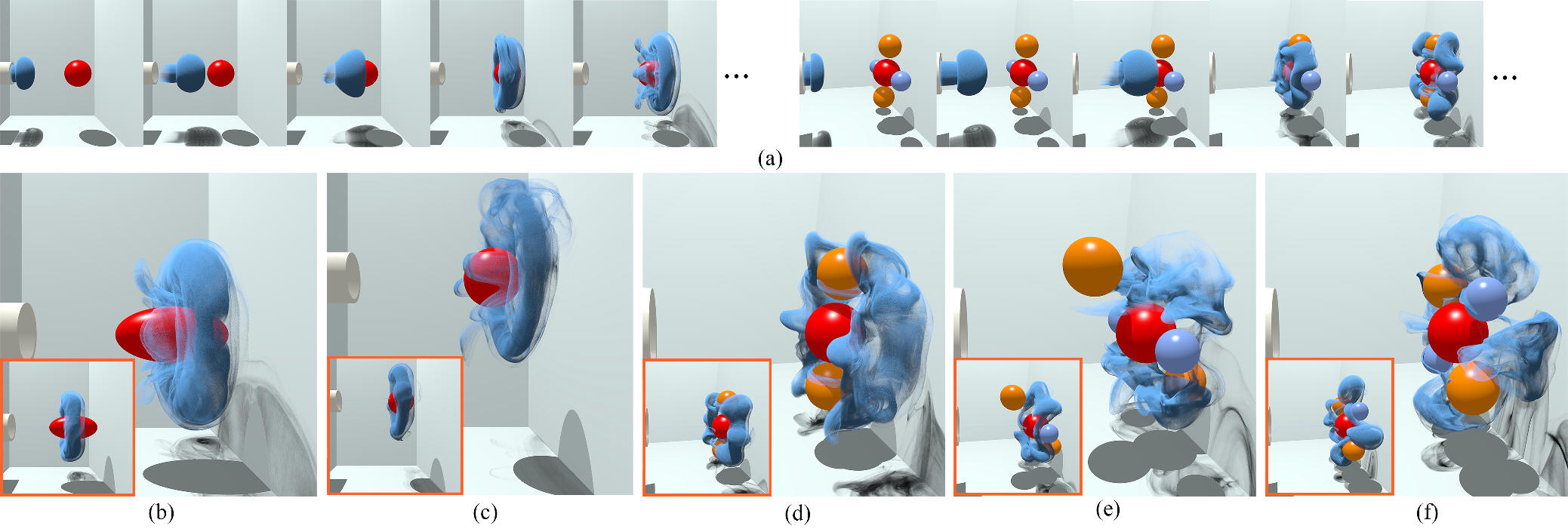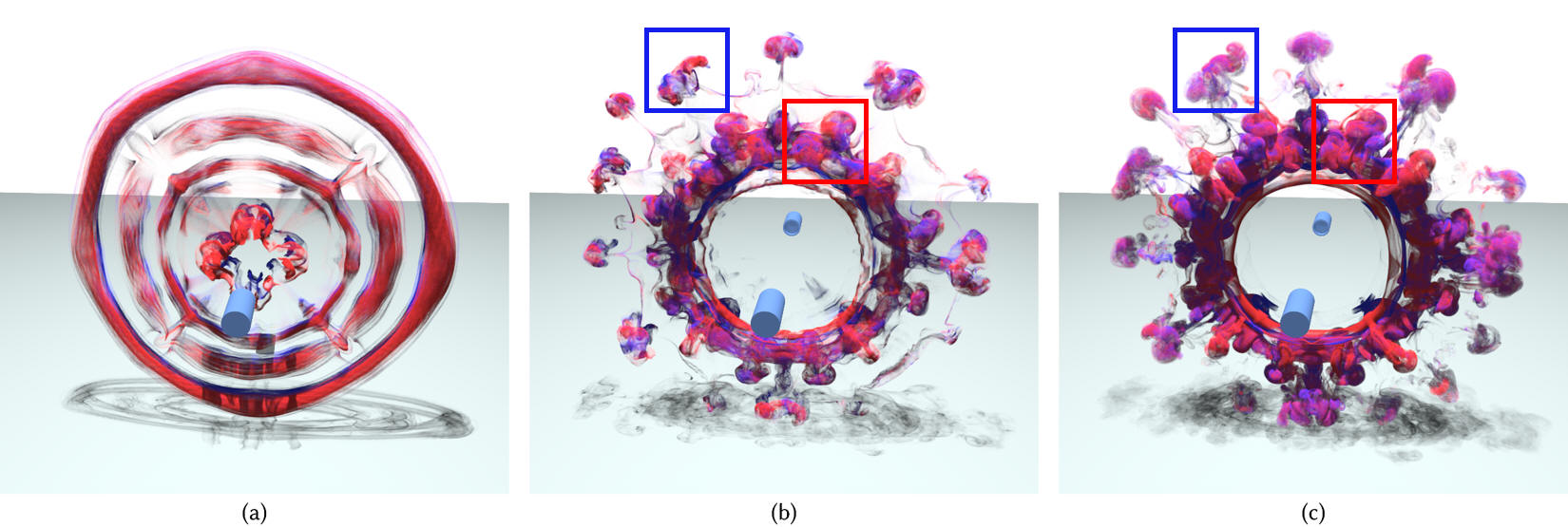| ACM TOG |
|
Dynamic Upsampling of Smoke through Dictionary-based Learning |
|
Kai Bai*1, Wei Li*1, Mathieu Desbrun2, Xiaopei Liu1 |
|
ACM Transactions on Graphics, accepted for publication, 2020 |
|
1. ShanghaiTech University |
|
1. Super-resolution synthesis
Super-resolution. From a single training simulation of a sphere in a jet flow as shown in Fig. 15 (where the coarse simulation is a downsampled of a high-resolution simulation), we can synthesize with phase-space encoding a large variety of flow simulations: (a) a vertical jet flow through a dragon-shaped obstacle; (b) a jet flow from a tilted inlet hitting an ellipsoid; (c) turbulent smoke induced by the fall of a plate on the floor; or (d) a wind-tunnel simulation of a car. In each example, we show the low-resolution input, the synthesized high-resolution result from tempoGAN network, and our synthesized result respectively. Our approach captures visually crisper flow details than tempoGAN in all these cases.
Generalized synthesis. From two simulation examples containing different numbers of ball obstacles (a), our network-based approach can upsample (with ratio 64=4×4×4) coarse simulations where we can change the shape of the ball (b), move the inlet position with longer simulation time (c), remove ball obstacles from the training set (d), and rotate the ball obstacles (e) & (f), to show the generalizability of our network.
3. Restricted synthesis
Restricted synthesis. From a series of input coarse/fine animation sequences with only changes of the inlet size (a), our network-based approach can upsample smoke simulations (with ratio 64=4×4×4) with arbitrary inlet sizes in between those used in the training set: (b) & (d) for two different inlet sizes not present in the training set. Compared to the corresponding ground-truth numerical simulations (c) & (e), our synthesized results share close resemblance.
4. Re-simulation
Smoke shooting. From a low-resolution (30 × 90 × 90) simulation input (a), our synthesized smoke (b) at high resolution (120 × 360 × 360), vs. the high-resolution simulation (c) for reference. Despite a factor of 64 (4 × 4 × 4) in resolution ratio, visually important structures (e.g., the secondary vortex ring marked with a red box) which were not in the coarse simulation (a) but present in the fine simulation are well captured.
Vortex rings colliding. From a low-resolution (100 × 50 × 100) simulation input (a), our synthesized smoke (b) at high resolution (400 × 200 × 400), vs. the high-resolution simulation (c) for reference. Despite a factor of 64 (4 × 4 × 4) in resolution ratio, we can still faithfully capture the obviously important vortex structures (e.g., the first (red box) and secondary (blue box) vortices, with leapfrogging in the center) present in the fine simulation.
5. Different flow upsampling
Different upsampling factors. From the low resolution (25 × 37 × 25) smoke flow shown as an inset, the corresponding fine (top) and synthesized (bottom) animations are shown at different resolutions: (a/d) 50 × 75 × 50, (b/e) 100 × 150 × 100 and (c/f) 200 × 300 × 200.
|





